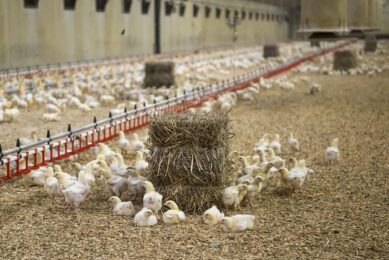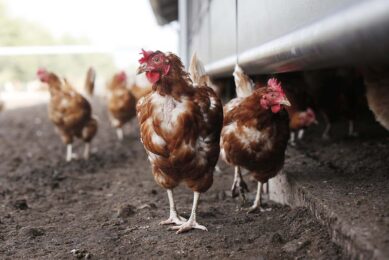Market dynamics of laying hen welfare in the US

Improving laying hen welfare has been an important dynamic in contemporary food systems. Over the past few decades this has led to a gradual ban on battery cages for poultry production systems. As a result, there has been a shift to aviary housing systems where birds have access to an open litter floor, nest boxes and perches, which still continues today.
The US is the second largest egg producer in the world. A battery cage ban has been implemented in some states. Beyond those states the demand for aviary housing systems is still relatively low. Government legislation setting production and labelling standards for laying hen welfare and the emergence of a differentiated market for higher welfare eggs are 2 key factors in raising baseline standards for laying hens. This article discusses the market dynamics of laying hen welfare in the US.
Players involved
The key drivers of policy and regulation in the US are government, industry and civil society. The government comprises federal and state bodies, the US Department of Agriculture, Food and Drug Administration, Federal Trade Commission and the Food Safety and Inspection Service. The industry consists of United Egg Producers, supermarkets, such as Wholefoods and Walmart, as well as food service and manufacturing companies, such as McDonalds, Wendy’s and Starbucks. Civil society actors include the Humane Society of the United States, Animal Welfare Institute, Humane Farming Association, Animal Legal Defense Fund, People for the Ethical Treatment of Animals, Compassion in World Farming, Farm Forward and Compassion Over Killing.
US government welfare legislation
There are few federal regulations to protect laying hen welfare related to transport and slaughterhouse protocols. However, there are no federal regulations banning or phasing out battery cages. Different states can pass their own laws on raising welfare standards.
California passed a law in 2008 to phase out battery cages by 2015. Michigan (2009), Ohio (2010), Oregon (2012) and Washington (2012), Massachusetts (2016), Colorado (2020), Nevada (2021), Utah (2021), and Arizona (2022) followed suit, banning the production and sale of battery-cage eggs. However, the actual ban on cage egg sales in Colorado, Washington, Oregon, Michigan and Utah is expected only by 2025.
Differentiated market for higher welfare eggs
There has been controversy in the US over the labelling of higher welfare eggs because most eggs are produced in battery cages and retailers have not adopted welfare as a major marketing strategy. In addition, there are currently no federal requirements to specify the housing system or the production system on egg cartons, nor is there any regulation of terms that imply greater animal welfare, such as ‘humane’, ‘free-range’, ‘farm fresh’ and ‘naturally raised’, except for the term ‘organic’.
However, the push to ban battery cages and the adoption of cage-free egg policies by large food corporations has led to considerable market segment growth, with cage-free egg production already rising from 4% in 2010 to 29.3% in 2021 and, according to US Department of Agriculture marketing service, approximately 66% of US hens will be in cage-free production by 2026.
Conclusion
Aviary produced eggs comprise a small share of the market for higher welfare eggs in the US due to a lack of government regulatory protection governing laying hen welfare and the grip of agricultural industries on federal and state governments. The current corporate-led move towards cage-free operations is an important step forward for laying hen welfare, although welfare standards in aviary housing systems need to be defined and enforced.
Reliable and robust certification systems are also required to provide protection for laying hens in intensive aviary systems and to be able to positively differentiate higher welfare eggs (and therefore price) towards the consumer.
Join 31,000+ subscribers
Subscribe to our newsletter to stay updated about all the need-to-know content in the poultry sector, three times a week. Beheer
Beheer








 WP Admin
WP Admin  Bewerk bericht
Bewerk bericht